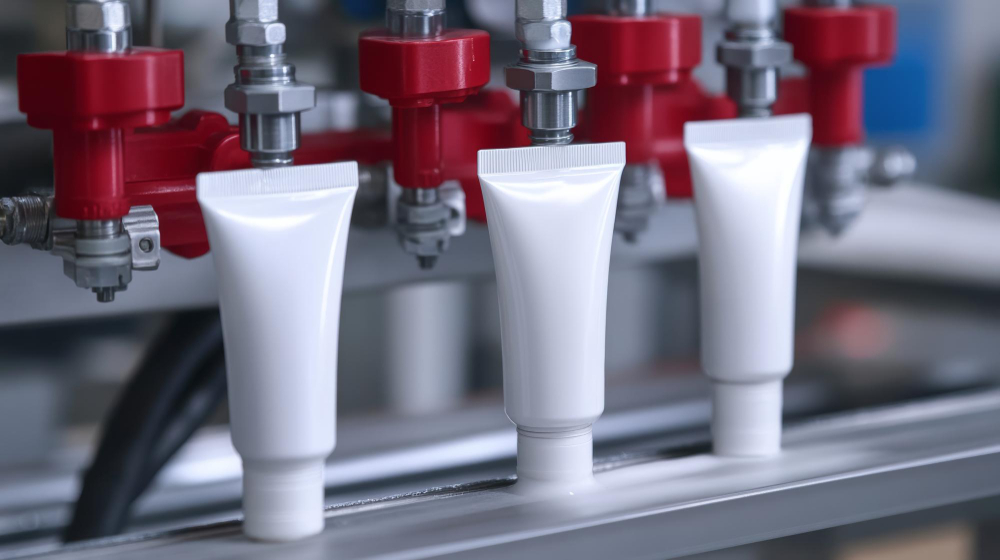by Ravindra Warang
7 minutes
Ointment Filling Machines in Pharma: Types, Benefits, and Key Considerations
Explore top ointment filling machines, their types, benefits, and selection tips for pharma-grade precision and compliance.

In the not-so-distant past, ointments were filled into tubes manually with syringes and spatulas. The process was time-consuming, inconsistent, and prone to contamination. Today, pharmaceutical companies operate high-speed ointment filling machines that fill, seal, code, and eject hundreds of tubes per minute with pinpoint accuracy.
These machines are no longer optional—they’re central to compliance, efficiency, and commercial viability. Whether you’re launching a new dermatological product or upgrading your manufacturing plant, choosing the right ointment filling machine can significantly impact product quality and throughput.
This article explores the types of ointment filling machines, their benefits, working principles, and key selection criteria based on regulatory and operational requirements.
Why Ointment Filling Is a Critical Step
Unlike tablets or capsules, ointments must be filled in precise doses into tubes, jars, or other containers without introducing air, contamination, or viscosity errors. The filling step must:
- Ensure dose accuracy and uniformity
- Maintain product integrity and aesthetics
- Prevent microbial contamination
- Meet cGMP and packaging regulations
Types of Ointment Filling Machines
1. Tube Filling Machines
These machines are designed to fill ointments into collapsible tubes made of aluminum, plastic, or laminated materials.
Key Features:
- Automatic tube orientation and positioning
- Volumetric or piston-based dosing systems
- Heat sealing (plastic tubes) or crimping (aluminum)
- Batch coding and trimming station
- Output range: 30 to 300 tubes per minute
Common Applications:
- Dermatological ointments
- Oral care products (e.g., medicated gels)
- Topical anesthetics
2. Jar Filling Machines
Designed for creams and ointments packed in wide-mouth containers.
Key Features:
- Servo-controlled nozzles for precise filling
- Piston or peristaltic pump systems
- Integrated lid placing and capping modules
- Compatible with glass, PET, HDPE jars
Typical Use Cases:
- Moisturizing creams
- Burn care ointments
- Veterinary topical preparations
Filling Mechanisms Explained
Automatic vs Semi-Automatic Systems
Semi-Automatic Machines
- Require manual tube feeding or cap placing
- Ideal for R&D labs, startups, or low-volume lines
- Lower initial investment
Fully Automatic Machines
- Integrated feeding, filling, sealing, coding, and ejection
- Suitable for high-throughput manufacturing
- Compatible with SCADA, MES, and serialization systems
Key Considerations for Machine Selection
1. Viscosity and Rheology of the Product
- Highly viscous ointments need piston fillers
- Low-viscosity gels may need peristaltic or volumetric systems
2. Type of Container
- Tube, jar, sachet, or pump?
- Material: Aluminum requires crimping, plastics need heat sealing
3. Required Speed and Throughput
- Batch size, shift duration, and market demand determine output range
4. Sterility and Cleanroom Compatibility
- For sterile ophthalmic or rectal products, machines must support CIP/SIP
- Use with ISO 5–7 cleanroom environments
5. Integration with Upstream & Downstream Equipment
- Mixer to filler connection via sanitary transfer lines
- Cartoning, labeling, and track & trace modules
Benefits of Modern Ointment Filling Lines
- Dose Uniformity: Repeatability ensures consistent drug delivery
- Reduced Waste: Precise dosing and minimal spillage
- Time Efficiency: Thousands of tubes filled per hour
- Regulatory Compliance: Meets FDA, EU GMP, CDSCO norms
- Ease of Cleaning: Tool-less disassembly and CIP systems
- Customization: Change parts for different SKUs or packaging sizes
Common Challenges in Ointment Filling
- Air entrapment leading to tube deformation
- Cross-contamination during product changeover
- Inaccurate filling due to viscosity fluctuations
- Seal integrity issues under improper heat/crimp settings
These can be mitigated through equipment validation, routine calibration, and batch changeover protocols.
Conclusion:
The moment when a cream or ointment is transferred into its final container is more than just a packaging step—it’s a critical quality control point. With the right ointment filling machine, pharma manufacturers ensure that every unit meets its promise of safety, effectiveness, and consistency.
As demand for topical treatments rises, investing in the right filling technology becomes a strategic differentiator. Because in today’s pharma world, it’s not just what you make—it’s how precisely you deliver it.
FAQs
1. What is an ointment filling machine?
It is equipment used to accurately fill and seal ointments into tubes, jars, or containers in pharmaceutical manufacturing.
2. What types of filling machines are used for ointments?
Tube filling machines, jar filling machines, and piston/peristaltic systems depending on viscosity and packaging type.
3. How do you choose an ointment filling machine?
Consider viscosity, container type, production volume, sterility needs, and cleanroom compatibility.
4. Are there machines for sterile ointment filling?
Yes, aseptic models with CIP/SIP and ISO 5 compatibility are available for sterile creams and ophthalmics.
5. What is the output capacity of modern filling machines?
High-speed machines can fill 200–300 tubes per minute, while lab-scale units fill 20–50.




